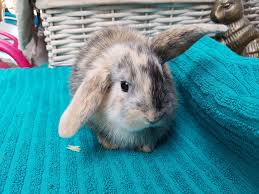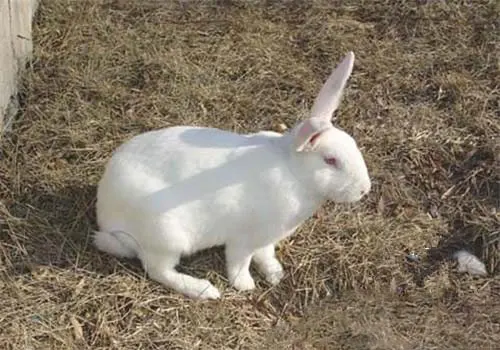Variety Overview
The Japanese Lop-Eared Rabbit, also known as the Japanese White Rabbit, is a breed that originated in Japan. It is believed to be a crossbreed between the Chinese White Rabbit and the native Japanese rabbit, though this claim lacks concrete evidence. This breed is quite common and primarily raised for economic purposes.
Other Names: Japanese White Rabbit
Kingdom: Animalia
Phylum: Chordata
Class: Mammalia
Order: Lagomorpha
Family: Leporidae
Genus: Oryctolagus
Species: Japanese Lop-Eared Rabbit
Distribution: Native to Japan; reportedly bred by crossing Chinese domestic white rabbits with native Japanese rabbits.
Reproduction Method: Viviparous; females produce 5-7 litters annually, with each litter consisting of 8-10 kits on average, sometimes up to 17.
Behavioral Characteristics: These rabbits mature early and grow quickly. They are tolerant of coarse feed and exhibit strong maternal instincts and high reproductive capabilities, often serving as “nurse rabbits.” They are prized for their good meat quality and excellent skin quality. However, they tend to have larger frames and less plump carcasses, leading to lower slaughter yields and net meat rates.
Design Characteristics
The Japanese White Rabbit, recognized for its notably large ears and visible blood vessels, is considered an ideal subject for laboratory use. It has dense, pure white fur with a significant amount of guard hairs. The rabbit’s eyes are red, and its large ears stand upright with thin bases and pointed tips that resemble willow leaves. Female rabbits also feature dewlaps under their chins.
Living Habits
- Spring: Maintain Cleanliness Spring’s frequent rains and high humidity create ideal conditions for bacterial growth. It’s crucial to keep animal enclosures clean and dry through regular cleaning, frequent clearing out of waste, thorough washing down of surfaces, and consistent disinfection practices. To combat ground moisture, sprinkle wood ash or quicklime for effective disinfection.
- Summer: Focus on Cooling During summer months, ensure that rabbit enclosures are kept cool and well-ventilated without direct sunlight hitting the cages. If temperatures inside exceed 30°C (86°F), sprinkle water on the ground to cool things down. For outdoor rabbit farms, erect shade structures promptly and plant climbing vegetation like melons or grapes early in the season.
- Autumn: Manage Extreme Weather Autumn’s fluctuating temperatures between morning/evening and midday can make young rabbits prone to illnesses such as colds, enteritis, or pneumonia. Careful management is crucial; group-housed rabbits should be brought indoors every evening and kept sheltered during windy or rainy weather.
- Winter: Ensure Warmth In wintertime rabbit enclosures don’t need excessive warmth except for newborn kits; however, maintaining a stable temperature is essential to avoid sudden chills or heat spikes. Indoor enclosures should have doors and windows securely closed to block drafts while outdoor enclosures should have straw curtains over cage doors to prevent cold winds from entering; padding cage bottoms with straw or similar materials can provide additional insulation.

Feeding Techniques
There are various types of feed for Japanese long-eared rabbits (Japanese Lop). The method for raising commercial rabbits differs significantly from that used for pet rabbits; commercial rabbits are typically raised with less care using more resilient breeds like the Japanese Lop.
I. Green Feed
Green feed has high moisture content and low fiber but is rich in protein, vitamins, and minerals—offering complete nutrition that’s palatable and easy to digest. It’s the foundational diet for domestic rabbits and includes cultivated forage grasses, aquatic plants, wild grasses and vegetables, green tree leaves, and vegetable leaves.
II. Succulent Feed
This category includes various tubers and gourds which have high water content (75-90%) but low crude fiber while being rich in starch. They have low protein levels (only 1-2%) but are high in potassium while lacking calcium and phosphorus with a significant amount of nitrogen-free extracts.
III. Roughage
Roughage is characterized by its low nutritional value but high crude fiber content while being low in proteins and vitamins. However, maintaining an adequate amount of crude fiber supports healthy digestive function in rabbits.
IV. Concentrated Feed
This category includes grain feeds such as corn, barley, wheat, oats from Gramineae plants which are rich in nitrogen-free extracts primarily composed of starch; as well as processing by-products like soybean cake, oil residue, rice bran among others—all highly nutritious options for feeding rabbits.
V. Animal-based Feed
Animal-based feed refers mainly to milk products or by-products from dairy industries along with fishery or meat processing by-products—all known for their high protein content.
VI. Minerals
Mineral supplements address any deficiencies not covered by natural feeds; typically natural feeds suffice for rabbit’s mineral needs especially legumes making mineral deficiencies rare.
